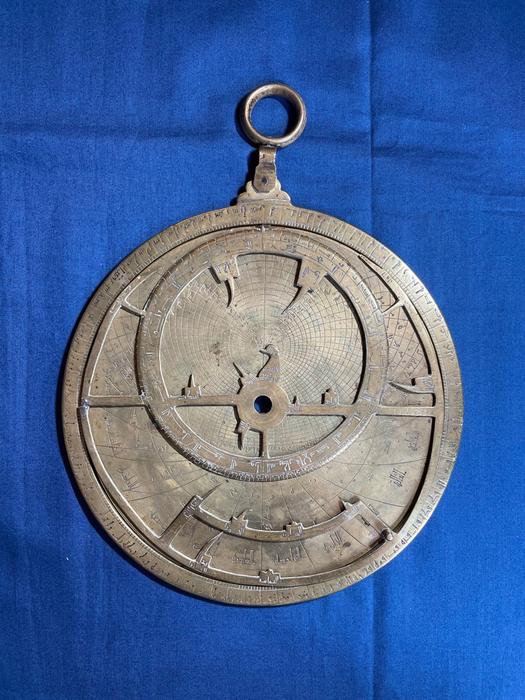An elaborate artifact that was once used to tell the time and calculate distances appears to have been used by members of three different faiths during its long and storied life. Known as an astrolabe, the relic has been dated to the 11th century CE and bears inscriptions in Arabic, Hebrew, and Western numerals.
Astrolabes are pocket-sized maps of the universe that enable users to plot the position of the stars. The etchings – which are clearly the work of multiple different individuals – are likely to have been made in numerous locations across Europe and North Africa, suggesting that the item passed between the hands of Islamic, Jewish, and Christian owners as it made its way along ancient networks of scientific exchange.
Remarkably, the 1,000-year-old astrolabe was identified by complete chance when Dr Federica Gigante of Cambridge University came across a picture of the item on the website of the Fondazione Museo Miniscalchi-Erizzo in Verona, Italy. “The museum didn’t know what it was, and thought it might actually be fake,” said Gigante in a statement. “It’s now the single most important object in their collection.”
After visiting the museum to study the astrolabe up close, Gigante was able to match the style of the original Arabic engraving to that seen on similar instruments from the Islamic-ruled Al-Andalus region (now Andalusia) of Spain in the 11th century. The position of the stars represented on the astrolabe’s rete – or celestial map – also align with this period, thus corroborating the age of the device.

The ancient astrolabe contains a map of the stars.
Image credit: Federica Gigante
Etched onto the metal relic are Muslim prayer lines, arranged to help the original user keep to daily prayer times. One side of the plate also contains an Arabic inscription reading “for the latitude of Toledo, 40°,” indicating that the astrolabe may have been manufactured here at a time when Toledo was inhabited by large populations of Muslims, Jews, and Christians.
The instrument also bears a signature featuring the names Isḥāq and Yūnus. According to Gigante, these may be Jewish names written in Arabic script, suggesting that the astrolabe may at one time have been circulating within Spain’s Arabic-speaking Jewish community.
A further set of inscriptions representing North African latitudes suggest that the item later traveled to Morocco or Egypt, while the presence of Hebrew lettering indicates that it eventually ended up back amongst European Jews. “These Hebrew additions and translations suggest that at a certain point the object left Spain or North Africa and circulated amongst the Jewish diaspora community in Italy, where Arabic was not understood, and Hebrew was used instead,” explained Gigante.
A final set of inscriptions including Western numerals were then probably made by a Latin or Italian speaker in Verona, as the astrolabe eventually found its way into Christian hands.
Summarizing the significance of this discovery in a new study, Gigante writes that “The astrolabe… stands out as a testimony to the contacts and exchanges among Arabs, Jews and Europeans in the medieval and early modern periods.”
The study is published in the journal Nuncius.
Source Link: 1,000-Year-Old Astrolabe Illuminates Scientific Exchange Between Muslims, Jews, And Christians